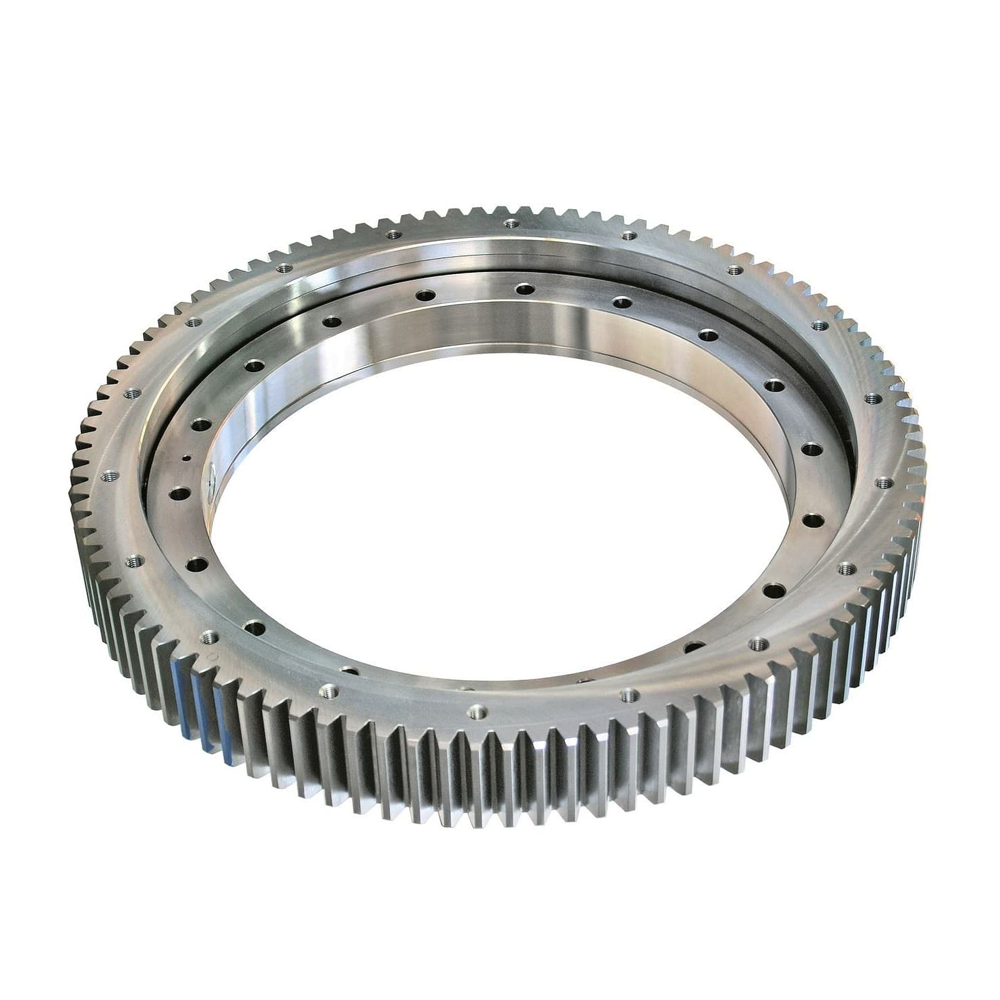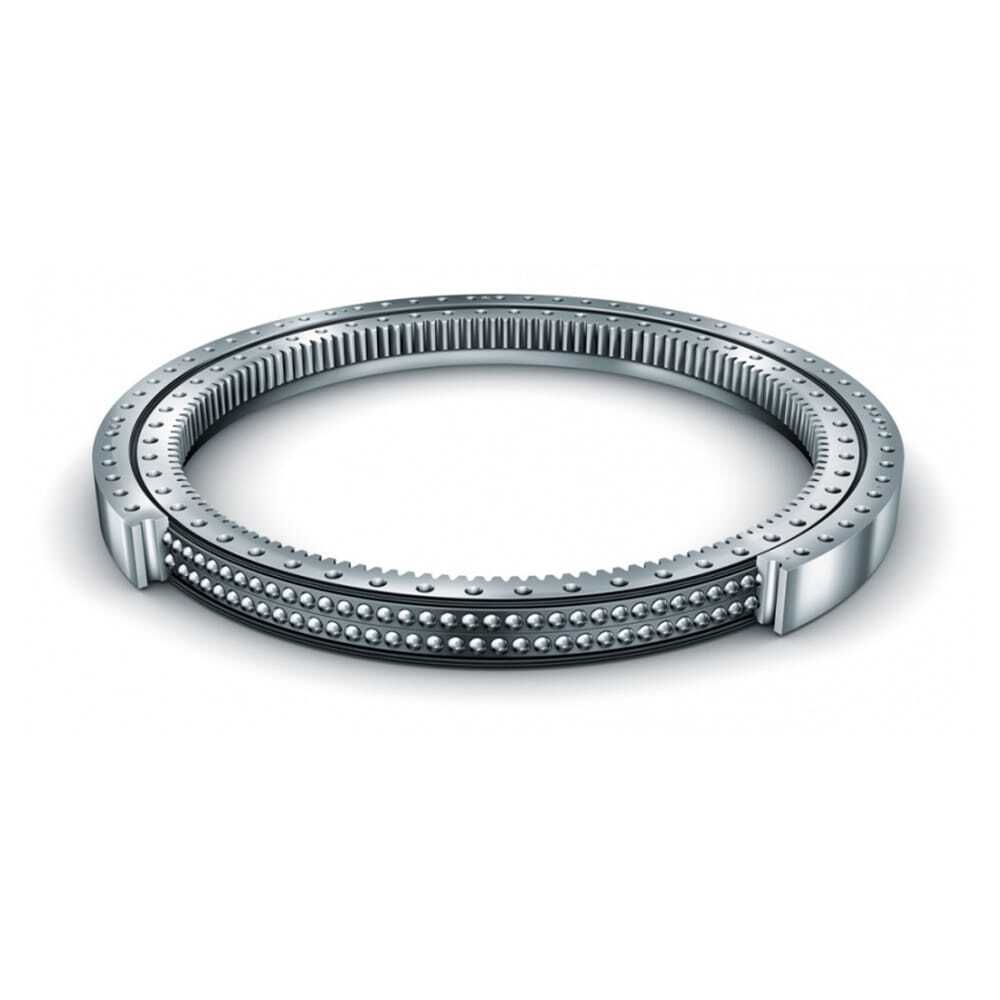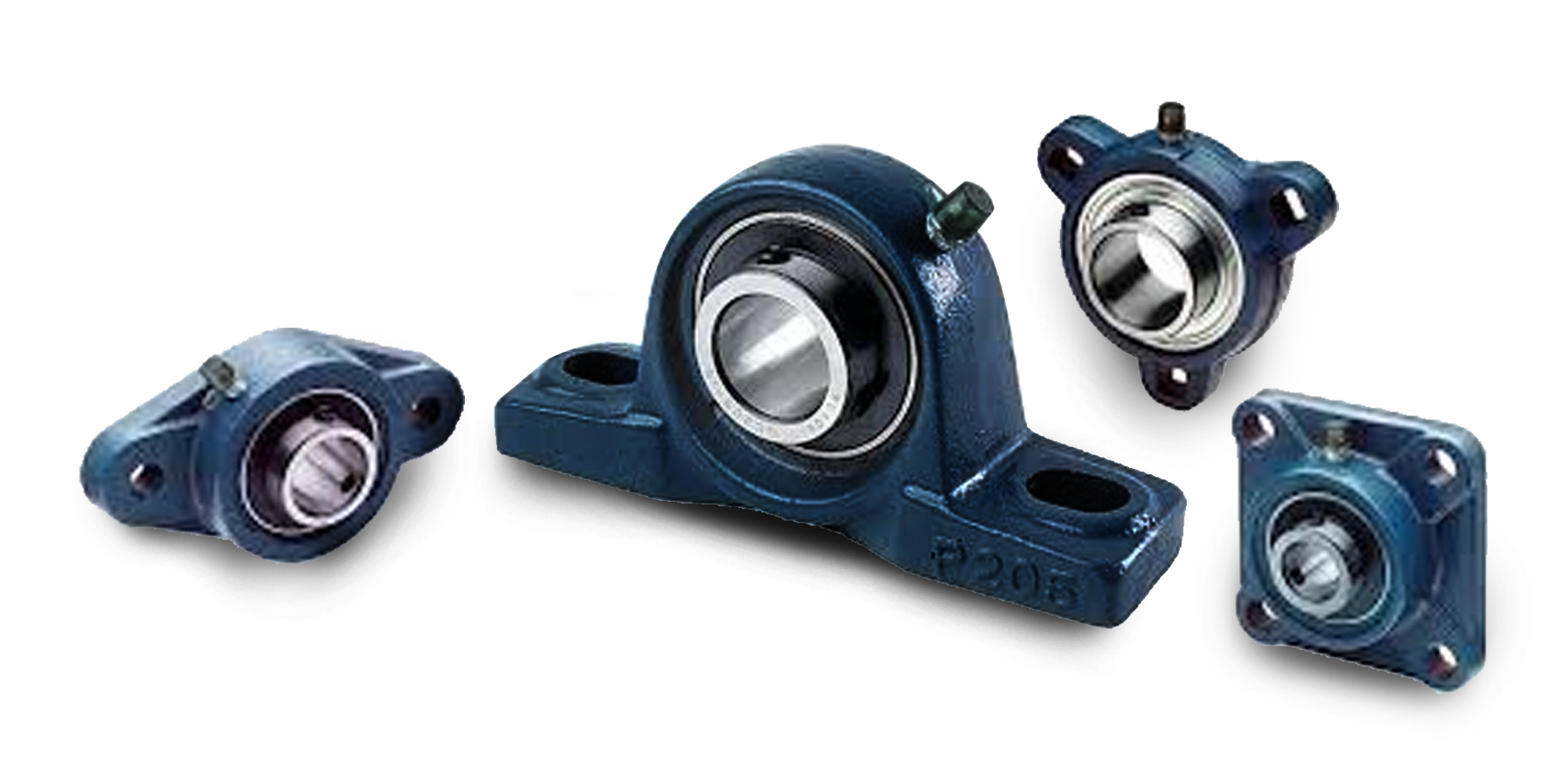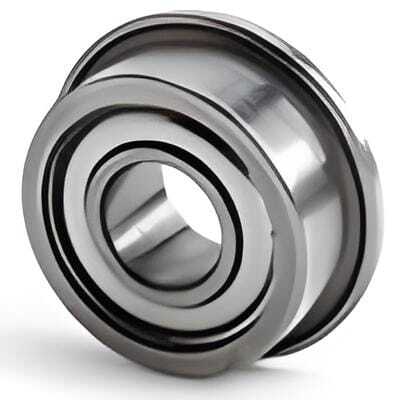Double-row Four-point Contact Ball Slewing Bearings Well Fostered Wind Turbines
As a major bearing manufacturer in China bearing industry, Lily Bearing is well-known for developing all sorts of sophisticated slewing bearings, one...

Slewing bearings are essential parts in modern machinery. They play an important role in a wide range of industries. These large bearings can hold a lot of weight and let things move around in a controlled way.
Machines that need to be in the exact position and can handle heavy loads rely on these bearings.
You'll find slewing bearings in all sorts of places like construction machines, wind turbines, and material handling equipment. They're extremely useful because they ensure smooth rotation and long service life against like axial, radial, and tilting.
Slewing bearings are sometimes called slewing rings or turntable bearings. Their special design allows them to handle high loads from different directions and still ensures smooth rotational movements.
They typically consist of an inner ring and an outer ring, with one or both including a gear. The bearing has tracks, along with rolling elements and their holders (cages or spacers), that can handle loads from any direction, one at a time or all together.
Slewing bearings have special mounting holes in both their outer and inner rings. These holes make it easy and quick to connect the bearings to other parts of the machine, which optimize power transmission.
Four-point contact ball bearings, or single row four point contact ball bearings, are divided into two types: flange and without flange. They can deal with loads coming from all directions: axial, radial, and moment loading. They work well with many different types of gears.
Eight-point contact ball bearings offer up to 80% more load capacity compared to four-point bearings. They are ideal for applications requiring handling high loads.
Cross roller slewing ring bearings provide high stiffness and precision, making them suitable for use in robotics and cranes.
Supporting higher loads, three-row roller slewing bearings are commonly used in heavy equipment like cranes and ship loaders.
Primarily used for axial loads, thrust ball slewing rings are suitable for compact equipment.
Combined slewing rings are special rings combine balls and rollers to handle loads accurately. They work well with all kinds of radial and axial loads and pressures, making them perfect for tough jobs that need both power and precision.
RealiSlim TT turntable bearings are small and light, making them great for machinery where space is tight and weight needs to be low. They hand loads well, move easily with longer service life, fitting well in places like automated systems and entertainment.
Slewing bearings are like the swiveling joints in machines like cranes, excavators, and tower cranes. They help these big machines turn sharply and lift heavy stuff with ease, no matter which way they're facing. On bulldozers and other large machines that move dirt, these bearings control how the blade or bucket moves. They make it easy to scoop up and handle soil and other materials.
Slewing bearings are super important in wind turbines. They help the turbine blades turn just right to catch the wind best and make more energy. In systems that follow the sun with solar panels, these bearings make sure the panels keep up with the sun's movement, absorbing as much sunlight and turning it into energy as they can.
Slewing bearings are used in stackers, reclaimers, ship loaders, and conveyors to handle bulk materials.
Slewing bearings make it easy for machines to glide materials around with high precision. These bearings make it easier to load, unload, and stack things fast and carefully. They are great for handy for keeping things moving without a hitch at places with lots of materials to handle.
Slewing bearings are what ensure robotic arms and factory machines move in with accuracy. They make sure each twist and turn are exact, so the machines can do their jobs perfectly every single time.
Slewing bearings help radar systems and missile launchers to target precisely. They keep satellite tracking systems locked on, too. In defense work, these bearings are super important for making sure everything works just right.
These bearings are like the ship's steering wheel, helping to guide the rudder safe navigation. They also handle heavy loads on offshore cranes, making sure they can lift and move loads easily on oil platforms and ships.
Slewing bearings ensure the smooth operation of medical devices. They help CT scanners and MRI machines move just right for clear pictures. In robotic surgery, they make sure the tools move with pinpoint precision, which is critical for delicate operations.
Slewing bearings are what keep the rides in amusement parks and the observation wheels spinning safely and smoothly, making sure everyone has a good time without a hitch. They're also key for rotating stages in theaters, giving audiences a great show without a hitch. These bearings make sure everyone has a smooth and secure time in entertainment spots.
Slewing bearings handle all kinds of loads: they deal with pushes and pulls along the axis, radial loads and even and moment loads that cause twisting.
These bearings are good at managing different forces, ensuring machines spin with ease and stay reliable no matter the stress they face.
Slewing bearings come in a variety of gear setups and can have tailored bearing designs to fit specific needs. They also support customized designs. Whether internal, external gears, or a gearless design, they are all perfect fit for any application.
Slewing bearings make it possible to spin things just right by using parts that roll between two circles. They spread out the weight, reduce rubbing, and help things move exactly where they need to, even when carrying a lot of weight.
Slewing bearings are compact but strong. Slewing bearings do double duty in machines: they act not only as the bearings that let parts roll smoothly but also as a strong part of the machine's structure.
This two-in-one feature makes them critical for making sure everything stays in place and works well together.
Slewing bearings can handle all sorts of tasks and are useful in many different bearing applications. These bearings appear everywhere, from building sites to robot workshops and green energy projects.
They make sure large machines can spin, carry heavy loads, and do it all with pinpoint precision. For expert advice on choosing the perfect bearing, reach out to LILY Bearing—we’re here to help!

As a major bearing manufacturer in China bearing industry, Lily Bearing is well-known for developing all sorts of sophisticated slewing bearings, one...

Mounted bearings are pre-assembled units that combine an insert bearing (such as a ball or roller bearing) with a housing. They are designed to...

Crane slewing bearings are essential parts that let cranes make their full 360-degree turns. This ability is crucial for handling various lifting...